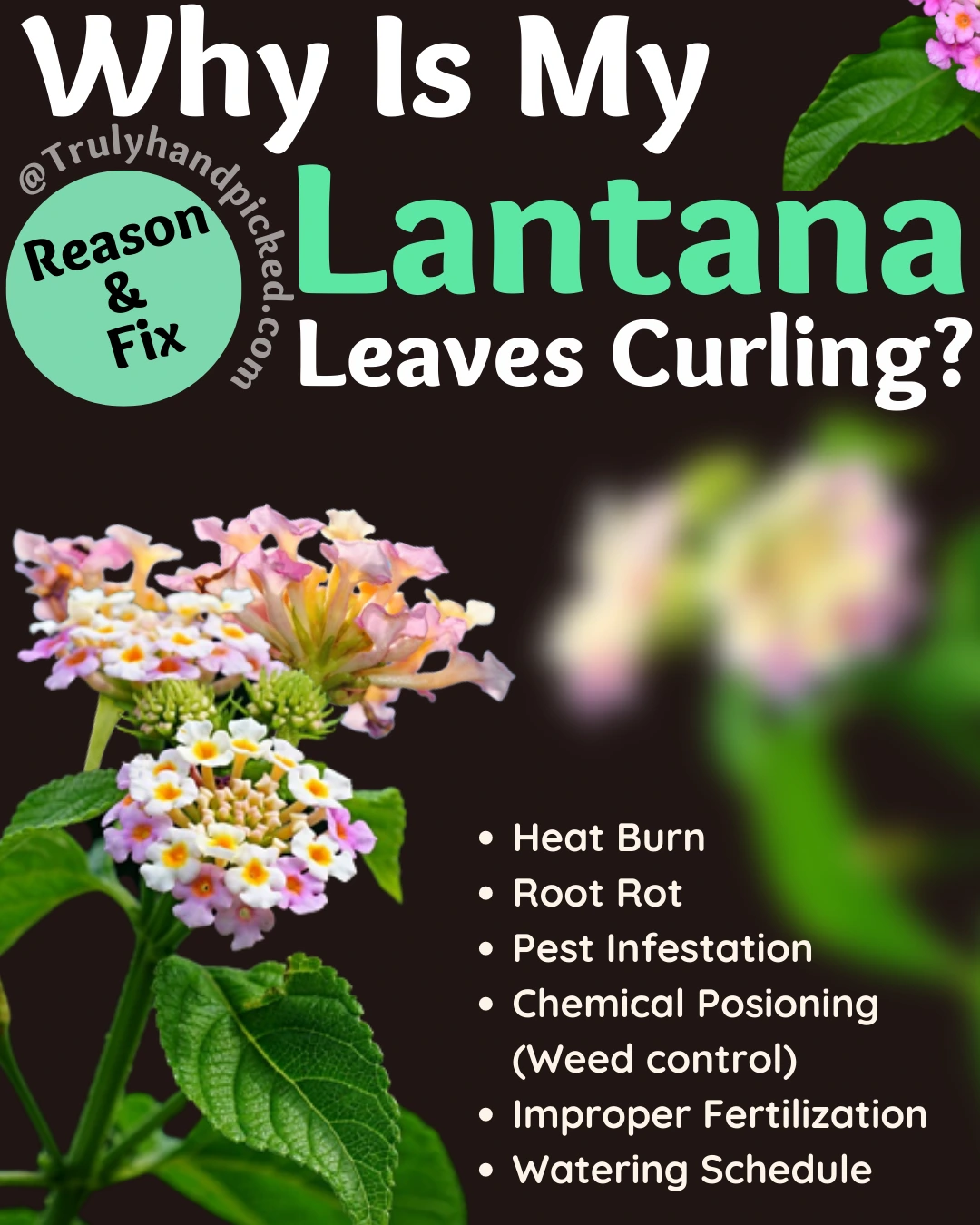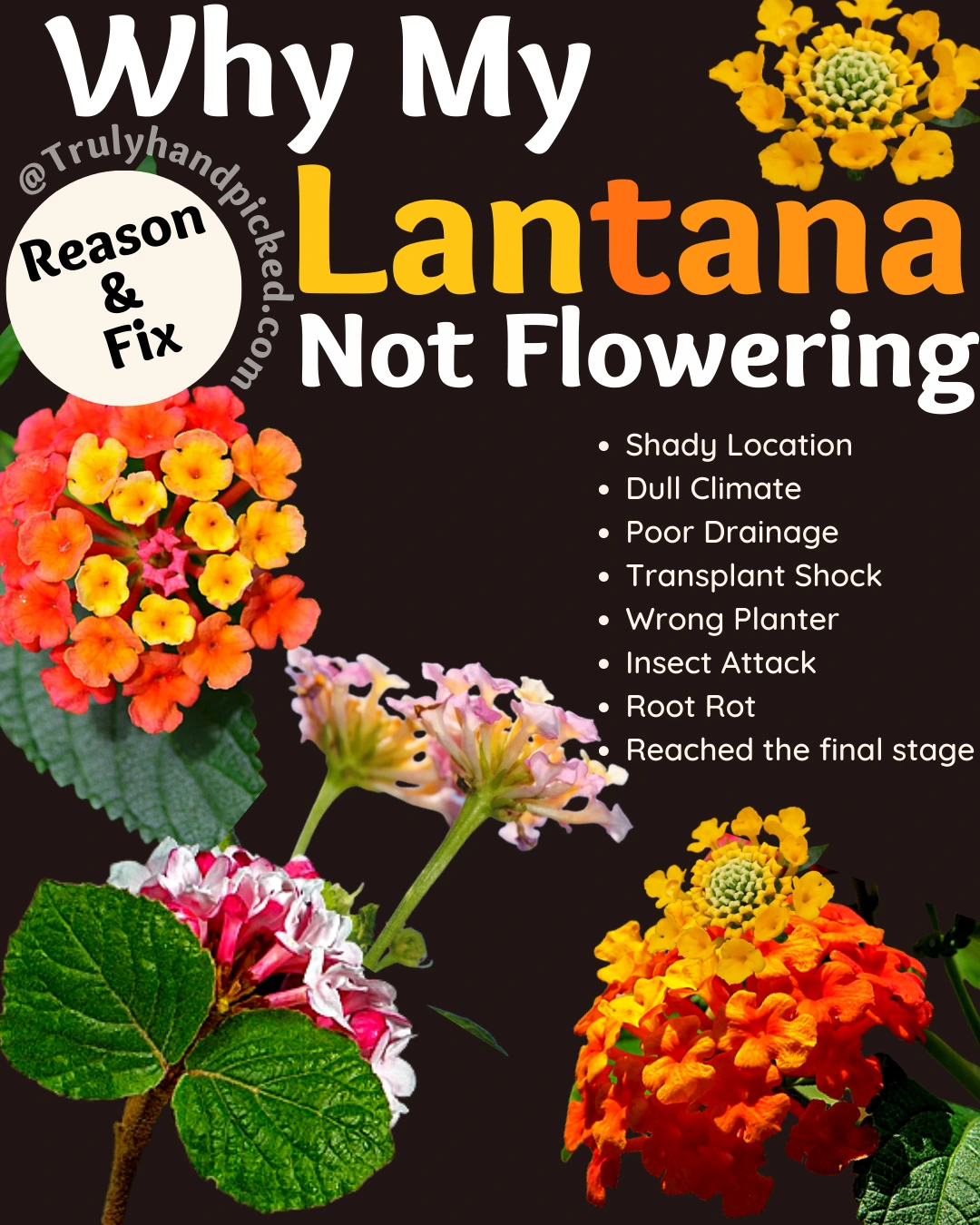Lantana is a perennial flowering plant that is mostly cultivated for its amazingly variegated flower bunches. A consistently warm climate and some other basic growing essentials are enough to keep lantana healthy and productive.
However, you may face some horrid troubleshooting issues by making some common mistakes in your daily caring regimen. Here we come up with some of those typical issues growing lantana may have in such cases, along with their possible remedies-
Why Is My Lantana Not Blooming?
Lantana produces flowers from late spring through winter with proper care. It blooms in a cluster of tiny flowers with a contrast of various vibrant shades like purple, yellow, pink, red, etc.
The cheerful blossoms appear mesmerizing when growing with multi hues in one spot. It can bloom all year long with little attention. But a few unfortunate reasons can make your plant stop blooming entirely. Here are some common causes of this issue along with their suitable solutions-
Reasons: Shady Location:
Keeping your growing lantana in a full-shade area or a spot with a lack of sunlight is a very bad idea. Lantana needs bright and consistent light from full sun exposure to thrive and bloom well. if they can’t get at least six hours of bright light a day, they will stop producing flowers for sure.
Unsuitable Weather:
Lantana plants are very particular about their climate needs. If you can’t provide them with suitable thriving weather, they won’t bloom in time. When we say unsuitable weather, it means cold climate, excess humidity, and temperature fluctuations.
Transplant shock:
If you repot your plant shortly, there can be a possibility of stunt-blooming in your lantana plant. Lantana plants are sensitive and take time to establish in a new growing medium. Their roots also need time to settle down perfectly in a new potting mix or soil medium. Till they settle down properly, you won’t be able to get blossoms from your plant anyhow.
Wrong Planter:
Unsuitable or improper pot can be one big reason for the not-blooming issue of your lantana plant. If you place your plant in the same planter for several years, the soil will be exhausted with nutrients. This won’t be a good condition for the soil to encourage your plant to bloom.
Related: Why my anthurium plant is not flowering?
Poor Drainage:
Lantana plants always prefer fast-draining soil to thrive and reach the perfect blooming condition. If you water your plant unnecessarily or use the clay-based potting mix to sow your lantana plant, you can get a poor draining issue shortly or if the plant receives too much hydration around its roots. Your plant will get stressed due to suffocation and that eventually prevents the flowering of your plant soon.
Insect Attacks:
Due to being a scrumptious plant for pests and bugs, lantana often gets attacked by some annoying insects. These insects often suck the essential nutrients from the sap of foliage and flower buds. This situation turns detrimental to the blooming capacity of the plant and discourages flowering eventually.
After Forming Seeds:
You can find small green pods or berries around the stems or near the top of the branches where the flower used to bloom. This indicates that your plant probably has been pollinated and reached the final stage of its lifespan. A lantana plant usually doesn’t bloom after reaching this phase, so, you have to leave the desire for blossoms from your lantana plant anymore.
How to Fix Blooming Issue:
Some best referable solutions we can refer to you in this regard are-
- Choose a sunny spot for your lantana plant where it can get six to eight hours of bright light every day
- Provide your plant with the best thriving climate that is moderately humid, warm, and away from cold stress
- Water your plant less comparing other flowering perennial plants and cater to fairly dry habitats to use the hydration accurately
- Choose a pot that is only one size bigger than the root ball with proper drainage holes and repot yearly to avoid root bound
- Don’t repot unnecessarily and give your plant some time to settle down after a replantation course
- Use soil with a great draining quality and pot with a good drainage system along with picking a sandy-based potting mix
- Keep your plant safe from insect attacks by rinsing with an effective homemade pesticide spray or washing your plant with a flush of water every few whiles
- And finally, deadhead your plant frequently during the period of blooming to escalate the longevity of the blooming period of your lantana plant effectively.
How To Make My Lantana Bushy?
A fully thriving lantana plant can grow up to 10 feet tall with a 3-ft. annual growth rate. But, some constant negligence in their caring plan can turn this shrubby flowering plant leggy and out of shape.
Here are some quick tips on how to hold a bushy look for your lantana with a simple and regular pruning session-
- To instigate the bushy form of a lantana plant, you must follow a regular and consistent pruning session
- Let the stems grow up to 10-12 inches tall before starting your first pruning schedule
- Find the newly emerged stems about 5-6 inches tall and cut them off with disinfected pruner
- Once the same branch shows new growth, remove the tip carefully
- This will encourage the branch to produce more flowers along with new shoots
- Once you are done with the pruning session offer your plant a good watering schedule
- And feed it with a perfectly balanced liquid fertilizer with a 10-10-10 NP ratio
Offer your plant plenty of sunlight along with a good drainage system after that, and you will get the bushier lantana in your yard within a couple of months.
Related: How to make your crotons bushy?
Why And How To Deadhead Lantana?
Benefits of Deadheading Lantana:
Deadheading encourages your plant to produce more flowers and be producing or blooming for a longer period. So, you can stimulate your plant for continuous blooming by deadheading them frequently.
How to Deadhead Lantana:
To deadhead a lantana plant accurately, let the plant bloom naturally first. Then, cut off the flower before the fall off the branches. Make sure you start the process before the seeds begin to form. Once you complete the course perfectly, wait for the next blooming session and repeat the process as long as you want to let the plant bloom.

Why Is My Lantana Leaves Curling?
Lantana produces big green leaves with curvy edges and sharp-noticeable veins. This foliage not only increases the beauty of the lantana flowers extremely but also plays a crucial role in promenading the sign of illness in your plant.
Curly leaves on a growing lantana plant mean your plant is having some issues due to being ill-treated. Here are some probable reasons and ideas of how to deal with them expertly-
Heat Burn:
Cause:
- It means you probably place your plant under direct sunlight even during the burning summer noon
- Or you may let your plant go through heat burn under scorching summer
How To Fix:
Place your plant where it can grab enough bright light throughout the day but get a little shade from the dappled afternoon sun.
Related: Why syngonium plant leaves are curling?
Infections:
Cause:
- You may overwater your plant repeatedly which causes root rot
- Or you may place the planter away from the bright light that instigates fungal infestation in the root
How To Fix:
Keep your plant in a dry and warm condition and apply a coat of neem foliar spray in case of any sign of fungal infection.
Pest Infestation:
Cause:
- If you let those nasty sap-suckers harm your plant uninterruptedly
- Or you don’t apply for any protection from the common lantana insects in time
How To Fix:
Give your plant a good wash with homemade insecticide sprays and keep them protected from sudden bug attacks in every possible way.
Chemical Poisoning:
Cause:
- If you use market-based pesticide sprays on your plant repeatedly
- Or apply high-chemical-based weed controllers to your plant
How To Fix:
Keep your plant weeds-free by plucking them manually with your hands and always apply homemade insecticide sprays to keep the bugs at bay.
Improper Fertilization:
Cause:
- It means your plant may suffer from malnutrition
- The NPK ratio of your regular fertilizer for feeding lantana is not suitable for the plant
How To Fix:
You must keep the NPK ratio of a chosen fertilized perfectly balanced and sometimes increase the nitrogen content a bit to enhance the foliage production effectively.
Related : Fix Root Rot in My Dracaena Plant
Bad Watering Habit:
Cause:
- This indicates you must have been overwatering your plant unnecessarily
- And probably your plant is getting root issues due to soggy growing medium
How To Fix:
Water your plant according to the weather and humidity level of the habitat. Don’t water your plant until the top soil turns 70-80% dry between the watering schedule.

